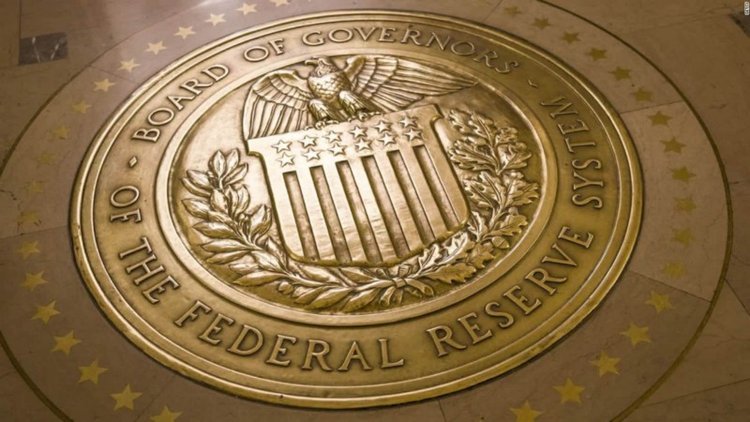
In search of an answer to this question, I’ll start with a week-long discussion with my friend Dan about the Federal Reserve. Is the Fed harmful or helpful? Our conversation was sparked by an article written by a former Fed advisor, Danielle DiMartino Booth, “How the fed went from lender of last resort to destroyer of American wealth”. Dan was skeptical of the article and wanted to discuss its positions.
My friend Dan (DH) started the conversation with this question:
DH: One of the recurring complaints I hear from some fiscal conservatives is about the Federal Reserve and how evil it is. I’m trying to understand why and have been doing a little research. I have read a lot of people complain about the era of “cheap money” and how it is having a terrible effect on the real US economy (despite all the traditional markers like unemployment rate and DOW looking really good). Is it justified?
WR:
Consider this. If I offered you a $100 bill or $100 in gold, which would you take? What if I made the same offer to you in 1913 when the Federal Reserve (the Fed) was established?
Which option would provide you with more purchasing power today? The answer is $100 worth of gold in today’s currency. The U.S. Dollar has lost 95% of its purchasing power in 100 years. $100 of gold in 1913 would now be worth over $2,000 in today’s currency.
The Fed created an abstraction, called the monetary system, that our entire economy sits on top of. That abstraction allows them immense and unchecked power; most people are not aware of it. They do not answer to Congress. They are not audited by our government. The Federal Reserve is a private corporation. By targeting 2% inflation, you’re targeting a 2% “tax” on the entire economic system. With that target, we are all agreeing to reduce our purchasing power by 2% per year. Every percentage point of inflation erodes everyone’s purchasing power. By design. And, this “tax” affects the poor most.
The Fed has helped the U.S. dominate the world economy by using many levers and tools. We can import or export inflation by many Fed maneuvers. It’s been great for U.S. citizens, but the rest of the world has caught on and they are tired of it. They are tired of the U.S. dollar reigning supreme as the world reserve currency because it allows us to force our country’s debt on the whole world. If they hold U.S. dollars as reserve assets and the purchasing power of the U.S. dollar diminishes by 2% per year, they are losing value. We essentially can export our debt around the world.
We’ve been able to do this because of the Bretton Woods agreement after WWII. It tied the U.S. dollar to gold and then all other major currencies, like the yen and the British pound, to the U.S. dollar. This probably would have been fine if Nixon didn’t pull us off the gold standard in 1971. But Nixon was forced to because the U.S. government was spending way more than it had and there was a currency war going on with France. Charles de Gaulle et al, knew the U.S. couldn’t back every one of its paper dollars with gold, so he kept exchanging dollars for gold until Nixon was forced to act.
An economy is ultimately based on trust and we are at the end of that ride. Soon it will become a game of musical chairs in the form of a currency war. We are already in the beginning of a currency war with China. You will see a lot more in the coming years. There are going to be winners and losers.
You will see more gold repatriation in the coming years, like Germany and other countries have already initiated. You will see interest rates spike, in the coming years, if we have difficulty finding buyers for our US Treasury bonds. One of the main reasons it has not already begun is because other major developed economies are still manipulating their own currency through quantitative easing (QE) and negative interest rate policies (NIRP).
To answer your questions, “cheap money” has us focused on financial leverage (in the form of borrowing) instead of productivity. Now, “cheap money” adds volatility and risk into the economic system and that’s why you see greater and greater booms and busts. These are getting bigger and more severe. If our money was backed by something, like gold, there would be constraints within the system. You would not be able to print currency out of thin air. That would force the government to make better choices along the way. Printing more currency devalues existing currency. Checks and balances so to speak. Capital would have to be more efficient because it would be competing against all the other ways it could be deployed more productively.
When the U.S. was in the middle of the Industrial Revolution, we had solid money because it was backed by gold. We didn’t have a central bank tweaking the economy by changing the price of borrowing. Though, we had different problems back then. The country’s wealth grew on the back of productivity not borrowing. A core reason why the Founders didn’t want the U.S. to have a central bank is because they didn’t want the government to have the power of currency manipulation.
We are not doing as “well” as you think. We have the Dow higher, but in relation, our purchasing power has been greatly diminished. The average family doesn’t have the same purchasing power as they did 50 years ago. While unemployment may be low, average wages’ purchasing power has been greatly diminished. You hear about it everyday in the stories on how average families are barely making it in America. There are many reasons for this, but one reason is our debasement of our currency.
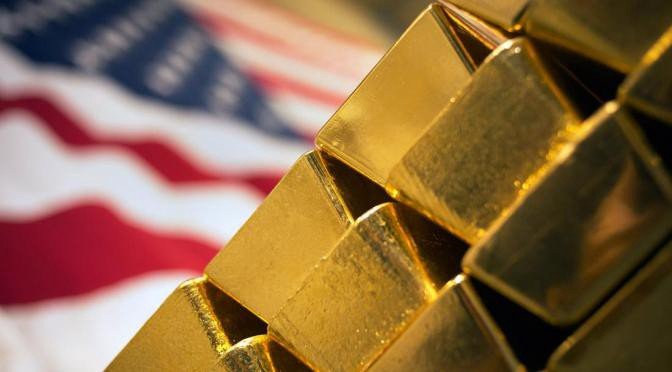
DH: What I want to know is, what would happen with the alternative to this? What if the Fed had not pushed the federal funds rate to zero? What would have happened? And is this writer just being unnecessarily inflammatory and political?
WR:
Well, there is no real way to know that would have happened. However, the Fed’s best option at the time was to push the interest rates to zero for a short period of time while there was systemic risk. That was what was called for during a time when we could have lost the whole system. But interest rates should not have stayed there for years. We should have not bailed out the banks. We should have not transferred the expense and risk from past banking risk onto the government’s balance sheet. We didn’t fix the systemic issue of over-leveraging using derivatives and create a clearing house for derivatives so we could have transparency. There are financial “weapons of mass destruction” out there because the derivative market is 20 times bigger than the underlying equity market. We cannot see (or back test) how all these derivatives are inter-related.
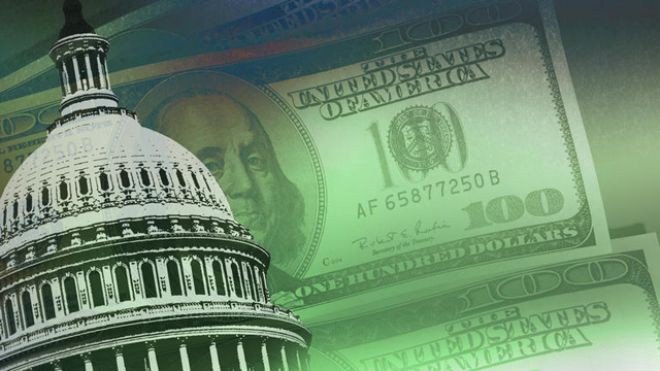
We also didn’t fix the fiscal policy through enacted legislation. The Fed was forced to act because the legislative branch was politically weak and couldn’t enact required fiscal changes. If they did, members run the risk of being ousted from office during the next election cycle. We couldn’t continue deficit spending. We also needed a payment plan. Due to promised entitlements, we owe $20T in debt and $120T+ in unfunded future liabilities. And we continue to spend more than we take in from taxes and that is not sustainable.
Without fixing both our monetary and fiscal policy, the whole thing is going to come down. If we didn’t allow deficit spending, forced a budget to be adhered, didn’t allow the government to borrow as much indiscriminately and we didn’t have a Fed to paper over this mistake, then we may grow slower, but we wouldn’t have the severe booms and busts. Moreover, the people would have more control over their government.
If you don’t have to worry about a budget, then it’s easy to spend $600B+ on “defense”. You can buy all the drones and surveillance you’d ever want, but we run the possibility losing our privacy and freedom someday because of this unchecked ability for the government to spend as much as they want on whatever they want. This is about control and who has it.
Prior to 1971, between the time we started taxing our citizens and the time we pulled off the gold standard, the U.S. government had a “net worth”. Its assets were much greater than its liabilities. This no longer the case. The government has much less than $20T in assets, which essentially means we are broke. We don’t have assets greater than our liabilities any more.
Are we insolvent? Yes and no. Because we can raise taxes and we can always print more money, we will be able to pay our debt. But with the current purchasing power of the U.S. dollar, we cannot say that the debt be paid back. Every time we print more money, more trust is eroded in the system. Our lenders are getting paid back in dollars that have less purchasing power. And we’re in the 8th inning…

DH: What WOULD have happened if we hadn’t bailed out the banks? Would that have been better? Wouldn’t it have led to a second great depression?
WR:
What would have happened is that all insolvent banks’ shareholders would have been wiped out, the debt holders of the bank would be in charge and most of the management would have been ousted. That is the appropriate outcome to capital that is deployed inefficiently. The risk should be shouldered by the shareholders of the banks, not the American citizens. All of the clean assets would have been put onto the balance sheets of re-organized banks who get a new capital structure and issue new shares. The FDIC would sort out the depositors, where needed.
If there was systemic risk to manage then the U.S. government is the lender of last resort. While the severity may have been greater, the systemic nature of the issues would have been addressed. We would have been forced to fix the issues within our banking system. And it would have been shorter in duration because the systemic problems would have had to have been addressed and uncertainty would have been removed from the system.
If the pain is so great, then we should make the changes to the laws so it never happens again. Instead we papered over the problem and nothing systemic was fixed. The rich got bailed out and that’s not a capitalistic idea, but a moral hazard. And now the banks are bigger than ever. What happens next time?
DH: Most people who lament the existence of the Fed, for the reasons you state, seem to paint a dire picture. I hear the complaint loud and clear — our money is a fiction, tied to nothing of real value, our purchasing power has been destroyed, etc.
WR:
According to the Congressional Budget Office (CBO), mandatory spending will increase from $2.2 trillion in 2014 to $3.6 trillion by 2023. If military and discretionary spending stayed the same at $600B each, and interest payments rose in relation to debt owed and higher interest rates, to $400B from $300B — we would need $5.2T per year to pay our national expenses. Right now, we generate about $3.4T in tax revenues. Based on these projections, if nothing is done, we will be creating a deficit of $1.9T per year in 2023 if nothing is done. We should project economic growth in our forecasts but we’re still talking about over $1T in deficits per year. And it will only get worse each year as the Baby Boomer Generation ages and receives more entitlements like Social Security and Medicare.
The Federal Reserve, the income tax, fractional reserve banking and government borrowing all came into existence under the Federal Reserve Act. They had to change the Constitution to get it implemented. The problem was created day one by design and has been exacerbated by, globalization, the Bretton Woods agreement, deficit spending and the de-coupling of currency from the gold standard.
There is no example in history where a fiat currency has not gone to zero. It’s happened already in the United States (technically the American colonies) with the “Continental” and after the Civil War, with the “Greenbacks”. This time will be no different. Fiat currency has failed during the time of the Greeks (2,600 years ago), the Romans (1,700 years ago), Holland (500 years ago), France (300 years ago), the Weimar Republic (80 years ago) and many, many developing countries in modern times (China, Zimbabwe, Iraq and more).
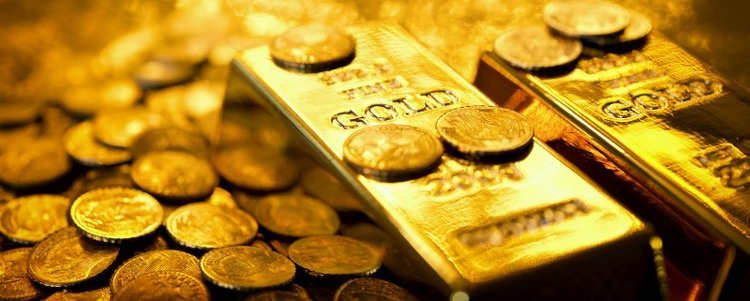
DH: But doesn’t purchasing power diminish over time anyway? Isn’t that what inflation is? And the alternative — deflation — is that not infinitely worse? Purchasing power diminished over time before the Fed existed…has it diminished faster or slower?
WR:
No, there is no systematic factor that has purchasing power erode over time, except inflation. For hundreds and thousands of years, the price of a home or the price of a cow was roughly the same. The price may go up and down based on the economy and supply and demand, but there was no systemic instrument to erode purchasing power over time. And that’s the point.
Gold-backed currency and the Federal Reserve are two distinct issues. Let’s talk about gold for a minute. Why is a gold standard important? Gold is rare; I think only one in a billion atoms are precious metals. We always reverts to gold, for the past 5,000 years, when trouble arises. Gold is a true store of value. The six proprieties that make gold perfect for money are — it is rare, portable, divisible, durable, fungible and non-consumable. Purchasing power does not dilute by gold in any physical or chemical context. It is the paper currency’s purchasing power that is getting decimated because paper currency can be manipulated.
Also over the millennia, we haven’t been able to add technology such that it makes production cost significantly less in gold production. An ounce of gold has been a pretty standard unit of labor and resources expended. It always takes X labor and Y resources to pull one ounce of gold from the ground. Gold is stable, consistent and that is the compelling factor.
Alchemy has tried for thousands of years to turn various materials to gold. I just don’t think it’s going to happen in the next 20 years.
Gold has backed the US dollar for most of our 225+ years as a country and before as a republic. Gold is mentioned in the US Constitution many times and the founders explicitly did not want a central bank.
DH: The argument in favor of going back to the gold standard seems like a backwards solution. The only argument about gold seems to be that it has historically been a thing of value. If we went back to the gold standard, and in 20 years nanotechnology advancement made it possible for us to cheaply synthesize gold, at that point wouldn’t it render the gold standard meaningless? Is there any physical thing of value that would be impervious to the possibility of permanent value loss?
WR:
Right now, we’re on track to build a world reserve currency that’s backed by a mix of resources and a basket of currencies. The IMF is coming out with SDR’s, special drawing rights, which they are looking to ultimately be backed by something real — they have a paper on how they would like to do this by 2020.
China is secretly making an effort to be able to back their Yuan by gold. They import the 2nd largest amount behind India and they do not allow gold to be exported from their mines. China has so such large reserves from the 20-year trade imbalance, they may be able to pull it off.
There are only two possible outcomes for the U.S. dollar. It either becomes an asset-backed currency again or the currency receives a knock-out blow and is killed. Thus, if the U.S. dollar is to stay, then there will be a major re-pricing event, like has always happened in the past.
There are only two options for a country that borrows over 150% of GDP — deflation for 25 years like Japan or hyper-inflation like the Weimar republic. Japan is close to 200% Debt to GDP and is suffering from deflation. The usual option is hyper-inflation. With Trump and with our current Fed, it’s very easy to see which one of these will happen. We will inflate our way until we print enough money to pay our debts. Therefore, I believe our greatest risk is hyper-inflation.
The U.S. Government has pulled a neat trick by calling the entitlements, Social Security, Medicare and Medicaid, off-balance sheet, unfunded liabilities. So, when they say we owe $20T in total U.S. debt, they are not including the $120T+ we have promised to the people in the form of future entitlements. If you add those in, we’re well over 500% of Debt to GDP. That is not sustainable.
At some point our lenders will realize they aren’t being paid back with dollars that equal the purchasing power of the dollar they lent our government. That’s when final trust will be broken and no one will lend us money, at any rate.
Right now, the world is forced to trade their currency in for U.S. dollars before they can buy any commodity on the world market — oil, steel, gold. This comes from the Bretton Woods Act. When countries don’t have to do this, we’ll have a glut of dollars. What happens to the value of each dollar? It’s been propped up by this need for 65+ years. In the next five years, this will be an issue. What happens to the value of the US dollar when there are a glut of dollars in the world?
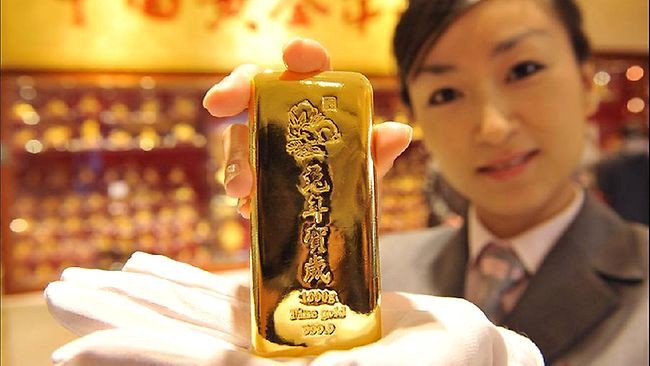
DH: How do we return to the gold standard in orderly fashion? Is it even possible to do without massive social upheaval? What about loss of value to property, businesses, governments, etc.?
WR:
Based on a whole host of reasons why the price of gold has been suppressed since the 1980’s, there will come a time in our future when there’s going to be a major dislocation event and physical gold will be re-priced to its proper value. There is no “orderly fashion” to this event because we will never be able to do what’s necessary before a crisis hits. Governments, by in large, are reactive. This will only get fixed after something happens.
DH: In 1931, as the Great Depression began to hit England, people panicked and started to demand gold for their paper money in such numbers that the bank was in danger of running out of gold. So, they abandoned the gold standard.
If we went back to the gold standard, what’s to prevent people from doing the same thing? While I recognize the current system has massive flaws, with unfunded liabilities and balloon-sized derivatives markets creating the illusion of real wealth, it doesn’t seem like the gold standard is any MORE secure than what we have now.
WR:
Ultimately, both in the U.S. and UK in 1931, governments refused to trade gold for paper money. And in the U.S., gold was outlawed. A U.S. citizen couldn’t own gold after 1933 until the mid-1970's.
In the future, there’s going to be an issue. People won’t be able to trade gold for paper until after the major re-pricing event occurs. At that time, the government wins and doesn’t mind trading at $5,000 or $8,000 for an ounce of gold, because the citizens take the hit of devaluing before they open the window again. That’s why many tout buying physical gold now. Paper gold, in the forms of ETFs and Future Contracts will get screwed, too.
There are still issues in a market economy to deal with, but we don’t need leverage creating ballooned bubbles with a bunch of cheap money that will take longer to fix and cause deeper depressions. This last Great Recession took nine years to recover, but the next one is going to take longer. Until the system is fixed, we’re going to have an issue.
Gold and the Fed are two distinct issues. The worse part is not having a Federal Reserve. The worse thing was taking the dollar off the gold standard because it allows for unlimited spending and has a built-in “tax” for re-payment. Not having sound money creates the possibility that it destroys everything that gets built on top of it.
DH: I also read that the Fed raised rates during the Great Depression to prevent people from swapping cash for gold, which made the Great Depression even worse. What’s to prevent them from doing that again? Or is abolishing the Fed required to switch to the Gold Standard?
WR:
There is nothing to prevent them from doing that again. Most likely, there will be some laws the U.S. government enacts for self-preservation. That’s one of the main arguments for owning a small portion of your net worth in physical precious metals. The U.S. dollar is currency (a medium of exchange) but no longer money (a store of value). So, investing in bonds, real estate, gold or just about anything is better than “saving”.
While the Federal Reserve and the gold standard are two separate and distinct notions, I do think we would need to go back to some form of resource-backed currency before the Federal Reserve could be abolished. However, I don’t think the Federal Reserve will ever be abolished. We may have a re-pricing of our currency, we may have huge market dislocations and perhaps a failed currency. We may even go back to the gold-standard, but I suspect the Federal Reserve is here to stay. What we can do is reform it.
DH: You cite the weakness of the legislature as one of the reasons our fiat currency-based markets are so volatile and prone to abuse. But if we switch to Gold and abolish the Fed, the legislature would be responsible for setting monetary policy. What’s to say they won’t do unimaginably terrible things for short term political gain? How is the no-Fed system more stable in that case?
WR:
There are a lot of great books on why the Founders didn’t want a central bank. There is fiscal policy and monetary policy. Since we’ve been unable to balance a budget or make fiscal policy changes, it’s forced us to use only monetary policy. But, monetary policy is for short fixes not structural fixes. Gold-based money would simply stop government from being able to spend because they simply wouldn’t have the money. They’d have to deal with it then and there, in some form.
I want small fixes, in-line, often. I do not want big, complex problems that happen infrequently. I want “Anti-Fragile” (read NN Taleb’s great book). I don’t want to put everything off until something blows up and we have nothing to do but pick up the pieces.
DH: Is there a credible alternative to both what we have now (fiat currency) AND the gold standard you advocate?
WR:
Yes, two things will happen. One is that there’s going to be a major re-pricing event in gold. They may make it illegal to own gold from the time the issue is mass-understood to the re-pricing event. That’s what happened here in the U.S. in the 1930’s. Those who own the physical gold will win. Once the re-pricing happens, they won’t allow people to trade gold to dollar until the new exchange rate.
Two, it will involve the U.S. losing its status as governing the world reserve currency. And that will affect every American from cheap food to cheap gas to cheap “stuff”. The American people will no longer get to ride on the backs of emerging and developing countries. Our way of life is going to get course-corrected. It’s a global market. The world is actively working to remove the U.S. Dollar as the world reserve currency. The world is actively leveling the playing field of world currency.
Putting It All Together
We want to ensure we draw a lines of distinction among fractional reserve banking, the gold standard (or lack thereof) and the Federal Reserve. But, all these entities playing in concert built some unsustainable problems that need to be managed and dealt with. Let’s learn how each one plays their role within the current system and see what lessons we can learn. We do have a problem on the horizon and it’s going to take some real work to fix.
At some point, we will have a major currency and credit event here in the US. Trust is being eroded. The U.S. dollar and our government spending are on a collision course and something will need course-correction. If we enter a major currency war or if people stop trusting the U.S. government to pay back its debt with U.S. dollars that has equal purchasing power, then the markets will not lend our government at any price. That’s how important trust is in the system.
With our money backed by nothing but a promise, there is an ever-increasing chance that the purchasing power of the U.S. dollar will continue to erode. At some point, the system will collapse, or a major re-pricing of gold will happen to equalize the system. History has proven, that gold always wins this battle in the end.
For more, join us on Facebook, Twitter and if you want to receive latest weekly updates on Investing, Entrepreneurship & Personal Finance, feel free to subscribe to our NEWSLETTER.